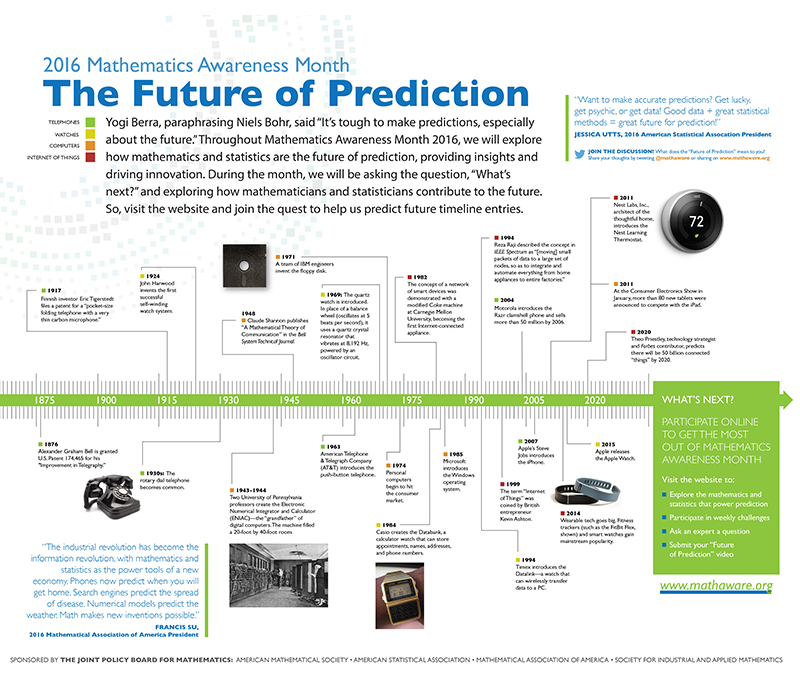Statisticians Don’t Need a Crystal Ball to Predict the Future
April 28, 2016
April marks Mathematics Awareness Month, created to increase public understanding of and appreciation for mathematics. This year’s theme is “The Future of Prediction” and this theme examines the role mathematics and statistics have in the future of prediction, providing insights and driving innovation.
How is the future for prediction itself? In Graham Southorn’s essay in the April 2016 issue of Significance, he says, “A raft of methods – from mathematical models to betting markets – are promising new ways of seeing into the future. And it is not only academics and professionals who can do it – online services allow anyone to have a go.”
We are familiar with popular applications of predictions for sports, film awards and politics. But did you know statistical predictions also play a role in determining how we will live, work, shop, and govern in the distant and not-too-distant future? Statisticians use a plethora of statistical models and complex data sets to answer questions about our future.
The increasing demand for statisticians and data scientists in the job market indicates data is driving business, policy and scientific discovery more than ever. Maybe you don’t need a crystal ball to see the future, but a statistics degree could be just as helpful.

Below are some examples of statisticians predicting the future in a wide variety of fields:
- Cassie DeWitt uses spatial and quantitative modeling to help the Detroit Fire Department predict response times to future incidents and plan for reductions in building fires.
- Data scientist Rayid Ghani worked with the Chicago Health Department to predict which communities are at the greatest risk for lead exposure and develop early intervention methods for at-risk children.
- The U.S. Census plays a critical role in allocating federal government resources and the makeup of our electoral body. Katherine Thompson discusses how she uses Census data to provide a snapshot of the future United States.
- Police in St. Louis, MO are embracing crime prediction software. Journalist Maurice Chammah and statistician Mark Hansen reported on its use for The Marshall Project.
- Manhole explosions can have deadly consequences and until recently, were incredibly difficult to predict in New York City. Statistician Cynthia Rudin developed an algorithm to assist Con Edison in predicting trouble spots.
- Precision medicine uses statistics to recommend the best treatments for an individual patient at a given time, accounting for a wide variety of variables.
Related Posts

Hindsight Is 2023 for Former Statistics and Data Science Students
It’s back-to-school season! Gear up for the upcoming semester and consider diving into the captivating world of statistics and data science. Looking for diverse job opportunities that span across every industry? Look no further! With a variety of graduate programs and jobs, now is a great time for students to become data scientists and statisticians….

Elizabeth J. Kelly: “Statistics is for Adrenaline Junkies”
Elizabeth J. Kelly has always loved math, and as a professional statistician at Los Alamos National Laboratory (LANL) and a recreational rock climber, Elizabeth is an avid thrill-seeker who enjoys a challenge. “Math reminds me of climbing, including the need to focus, problem solve and persevere. I guess I ended up in statistics because I…

